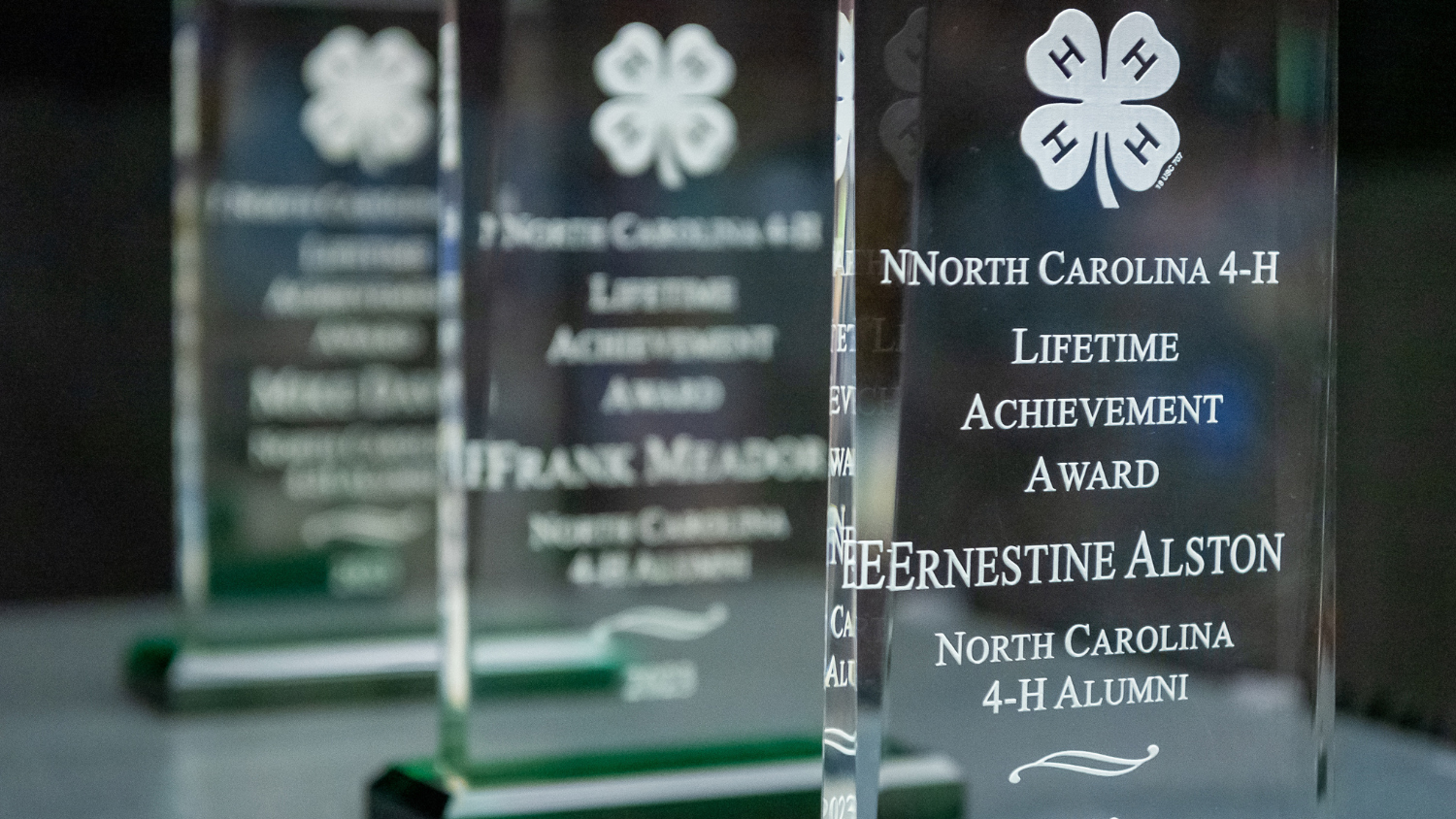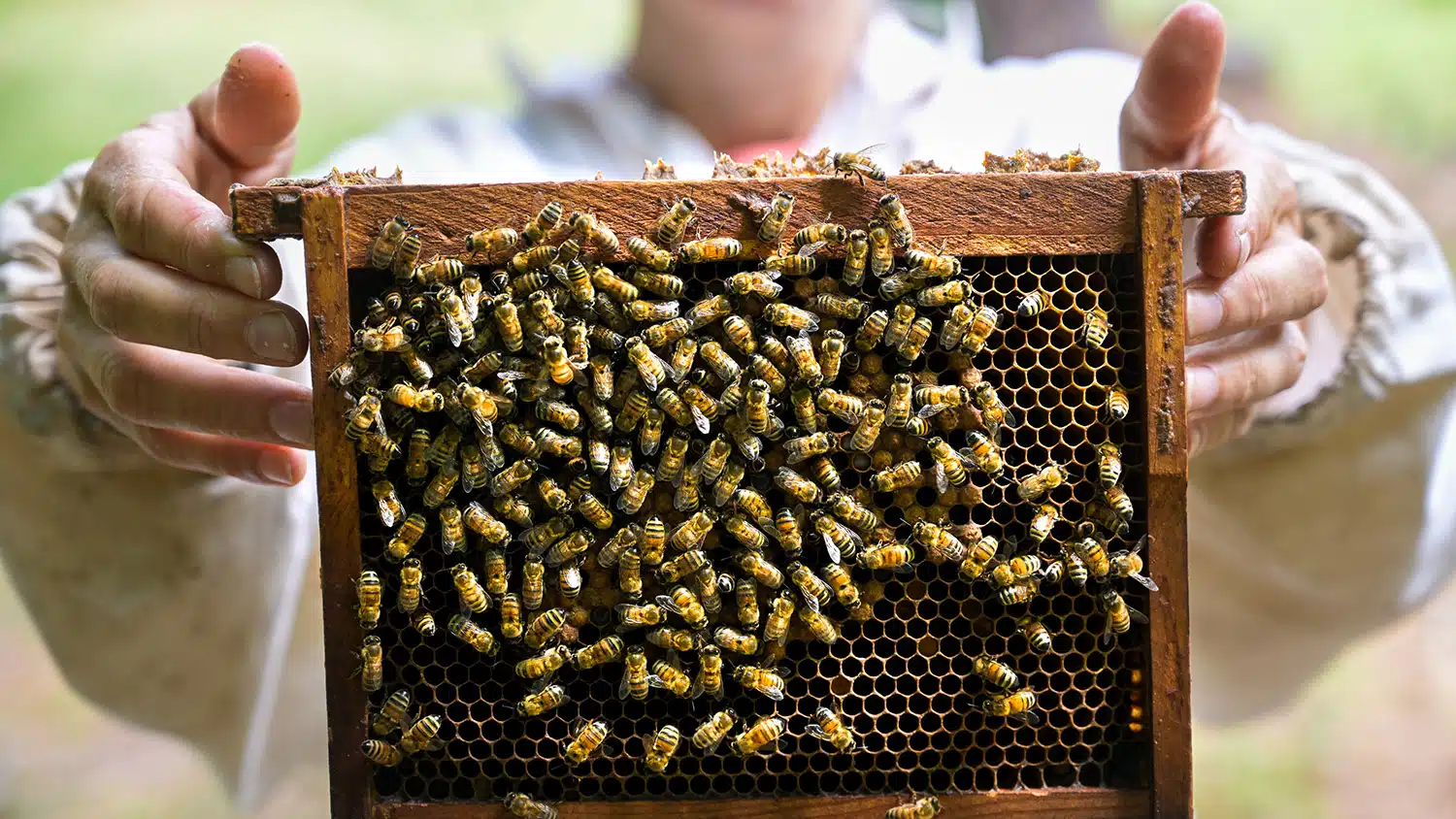Nutty. Sweet. Beautifully chewy. We’re not describing a box of chocolates, we’re talking about Carolina Gold Rice. This heirloom crop covered thousands of acres in the Tidewater Region of North Carolina in the 1800s before a series of hurricanes wiped out crop production.
After a 100-year hiatus, Carolina Gold Rice is making a comeback in North Carolina thanks to some ambitious Pamlico County farmers who are growing rice as much for the ducks as they are for the grains.
In our latest episode of Farms, Food and You, we’ll talk to Tommy Wheeler of Tidewater Grain Company and Angela Post, NC State Extension Specialist in small grains, about the comeback of Carolina Gold Rice and lessons they’re learning about how best to grow this not so new, but definitely reemerging, crop in North Carolina.
Podcast Transcript
Host:
Nutty. Sweet. Beautifully chewy. We’re not describing a box of chocolates, we’re talking about Carolina Gold Rice. This heirloom crop covered thousands of acres in the Tidewater Region of North Carolina in the 1800s before a series of hurricanes wiped out crop production.
After a 100-year hiatus, Carolina Gold Rice is making a comeback in North Carolina thanks to some ambitious Pamlico County farmers who are growing rice as much for the ducks as they are for the grains.
Today on Farms, Food and You we’ll talk to Tommy Wheeler of Tidewater Grain Company and Angela Post, NC State Extension Specialist in small grains, about the comeback of Carolina Gold Rice and lessons they’re learning about how best to grow this not so new, but definitely reemerging crop in North Carolina.
Host: Tell us a little about why you started growing Carolina Gold Rice.
Tommy:
So for us growing Carolina Gold Rice was a happy accident on all levels in some regards. I grew up knocking around, down in the Tidewater region of Eastern North Carolina down in Oriental. I grew up officially from Rockingham, North Carolina, but I spent a lot of my wasted youth down there, fishing and hunting and running around town, as they say, down there, and really fell in love with the place knowing that I would end up back there someday. And about 15 years ago, almost 20 years ago, myself, along with a lot of my high school best friends, people I grew up with really started migrating down to the Eastern part of North Carolina. Frankly to hunt and fish again, more from a recreational pursuits.
And we started a hunt club, a duck hunting club down there, which is not uncommon. Eastern North Carolinas loaded with them.
Traditionally, we use the equation of water plus corn equals ducks, right? It’s a real mathematics mindset that we have towards it. And if you’ve been paying attention to any of the inputs and the stuff that’s really going around about nitrogen costs and glyphosate costs, and the inputs for farming in general, going through the roof and, it just became a super expensive endeavor to grow proportionately with the rest of our hunt club because the kids were getting older and we needed more places to duck on it.
With my historical roots in the Eastern part of state really started researching alternatives that we could grow for corn, frankly, for recreational pursuits. And we were, Al and myself, were touring all over the country on a hunting boondoggle once a year, where we’d go to Arkansas and Missouri and Utah and all over the place. And we frankly discovered that all over the country, everybody was growing rice and managed to do it profitably and to manage their inputs and their costs for their recreational pursuits after the fact.
So then that led me with my historical piece down the path of, “well, dang, if they can grow rice, why can’t we grow rice?” And I started researching it and really found out that our area, Pamlico County specifically, and the Tidewater region of North Carolina was a very large rice producer up until around 1910.
Host:
Back to back hurricanes in 1910 and 1911 all but wiped out the crop in Eastern North Carolina, but the grain survived on small farms in South Carolina. In recent years, it was brought back in major production by Anson Mills grain company out of Columbia, South Carolina
Angela:
So it’s a variety of rice that was grown in North and South Carolina way back. And so that heirloom variety has kind of been preserved and carried through on small acreages from that point up to now. And it has a different grain length and a texture than our commercial rice that you see in the store. And it’s really sought after, by restaurants and foodies, for example. And that sector is really growing, just like craft breweries and some of these other kinds of food and drink activities. And so bakers are wanting heirloom varieties of grains for breads. Restaurants are wanting heirloom varieties of tomatoes and vegetables for their different recipes. And the same thing is true for rice and Carolina Gold rice is one of those… can identify it not only as a really specific varietal, but also as being specific to a place. And that makes it more profitable and kind of higher value product to grow in this space in particular.
And Eastern North Carolina is really suited for that because we have a lot of areas where it was just a wetland that was converted into farmland. And those areas where we’re starting to see, for example, salt water intrusion, and drainage issues, because we don’t have tile drainage would be areas that could go back into rice production. And this is true for not only North Carolina, but also the South Carolina coast and parts of the Georgia coast.
So this past year we received a New and Emerging Crops grant from the NCDA on a couple of different crops, but rice being one of them. And part of it was prompted by a grower in Eastern North Carolina, who has been growing Carolina Gold for a few years and was interested in kind of helping to expand that acreage in North Carolina. And so we not only were looking at… It wasn’t specifically for Carolina Gold rice, it was for rice production in general. So we actually brought in several different varieties from Mississippi and Arkansas, where we have higher rice production in the US, in those areas. We brought some of those varieties here to kind of see how they fared in both dryland and flooded situations.
Yeah, so they’re right now both sets of trials are in Eastern North Carolina. Sorry, we have a set at the Tidewater Research Station, the Vernon James Center there, and those are all dryland or upland rice.
And then on a farm in Pamlico County with Tidewater Grain Company, we have both flooded and upland situations where we have put those trials out. And that farm is where they’re growing the Carolina Gold rice that’s being produced in North Carolina now.
Host:
Chefs are catching wind of Carolina Gold Rice’s return to production and adding it to their menus. What they’re finding is that the taste speaks for itself.
Tommy:
It will ruin you. It will make you nothing, no disrespect to uncle Bens, but you’re not going to buy it anymore. You’re just not. It’s just a different deal.
And for me, when you put two pots of rice on the stove side by side, it is amazing the lack of flavor that is in normal white rice. When you eat our Carolina Gold rice, you’re going to ask questions like, “How much butter did you put in? How much salt did you put in? How much pepper did you put in? And what’d you do? Did you put bay leaves in? And did you do all this?” And you’re like, “No, that’s just boiled in a pot of water.” And they’re going to call you a liar, right? We did that very experiment when we went to that flavor show that we were talking about. We just cooked our rice in a Instant Pot. Didn’t put anything but water and rice in it, just as raw as you could put it. And everybody asked us, “Well, what’d you season it with? What’d you do?” And we were like, “Nothing. We’re not chefs. We don’t know what the hell we’re doing. This is just our rice and it’s raw and here’s a cup of it.”
And that’s what got people really to see, “Oh, wow. If it can do this by itself, then what could it do with me being a chef or me being a home cook when I do my magic to it. Imagine starting with these better ingredients, imagine what the end result will be.”
Host:
Tidewater Grain Company has been successful at marketing the rice throughout North Carolina to restaurants in the eastern part of the state, the Triangle, Charlotte, and Asheville. It’s part of a successful CSA program and is available to order by subscription. The crop is also getting attention outside of North Carolina.
Tommy:
We’re selling it, saying that we’re selling it all the way up through Tidewater, Virginia, all the way through DC. We’ve got some in New York City now. Every week I roll my eyes as to the places we ship it to. We’ve got a couple restaurants in Napa Valley that are running our rice, for example, in Colorado and Spokane Washington. The list goes on. It’s pretty unique. We even had chef William Dyson and chef Saif Rahman took our rice to the Middle East this past year. That was kind of a unique thing for us. They took it all the way to Abu Dhabi and we’re doing it in cooking classes and shows that they were doing over there, which was just surreal to think that we were now in international waters that… We call it taking sand to the beach.
It was pretty wild to think that our rice going to Eastern North Carolina was having the impact and stretching all across the globe like is. That’s our goal we’re going to be serving and selling in every county in North Carolina. And then I want to be the largest Carolina Gold rice producer in the world. Then I want to be the largest heirloom products producer in the world. That’s where we’re going to go.
Host:
Part of reaching that goal is continuing to work with researchers and farmers to learn how best to grow the crop. Angela is optimistic as her research goes into its second growing season.
Angela:
And we are looking forward to our second year of studies coming up. We have the same locations planned, and we’ll be doing variety testing. We’ll be doing some specific looks at Carolina Gold with regard to using different nitrogen rates and also plant birth regulators to try and manage the height because it is a very tall variety compared to most commercial varieties. So it’s prone to lay down with things like summer storms and stuff like that. So just a lot of different agronomic principles that we’ll be looking at to try and help a North Carolina grower understand how he should manage that crop.
And also we have some herbicide testing just to understand which crop protection products we can use in these to keep weeds out and to keep pests out. We don’t have any disease work per se, but we haven’t paying attention to what diseases are showing up. We don’t grow a lot of rice in North Carolina, so people would think, oh, maybe the diseases aren’t here or the insects aren’t here. They’re here. They’re just waiting for you to put the crop out there in the field. So watching those things and just creating some guidelines to prepare a grower, to try and add that crop into their rotations.
So I think it is a value add for any farmer that wants to put it out there in past history, we’ve had as many as a hundred thousand acres in the region, so that’s pretty big, but I would say over time it might grow five to 10,000 acres potentially over the next eight to 10 years. So that’s a long projection and it’s not a lot of acreage, but when you’re talking about a higher value crop then for example, wheat or corn that you’re going to sell for 5 to $8 a bushel, it makes a big difference to a grower to be able to grow something that they can sell for a higher price.
Host:
For Tidewater Grain Company, bringing back Carolina Gold Rice has been a wild ride that is starting to pay off.
Tommy:
We got into it to try to make it work for our recreational pursuits and to make the economics work. We now have taken a much broader view of sustainability.
We want it to work from idea all the way through the environmental elements and all of it work together, because that’s how it worked originally, right? That’s the most authentic thing we can do is to grow an authentic crop. That’s really what we’ve set out to do, and that’s what we’re going to do.
Host:
Thank you for joining us on Farms, Food and You. This podcast is a product of NC State Extension and the College of Agriculture and Life Sciences at North Carolina State University. If you would like to support the show, please share this episode on social media and leave a review on your podcasting app of choice. Let’s talk soon!



